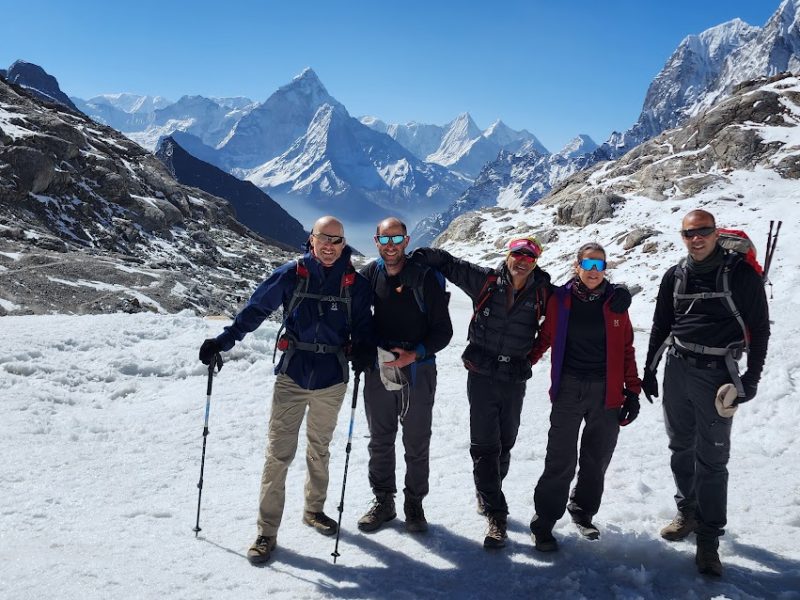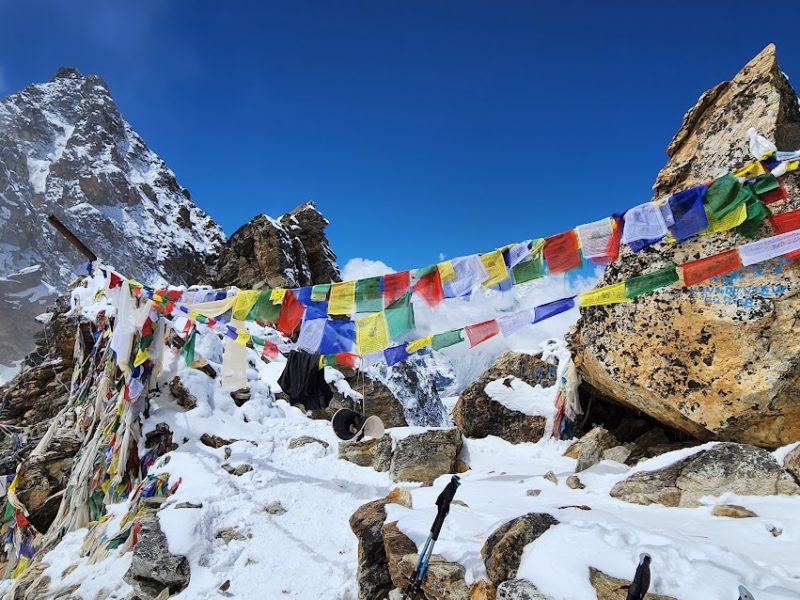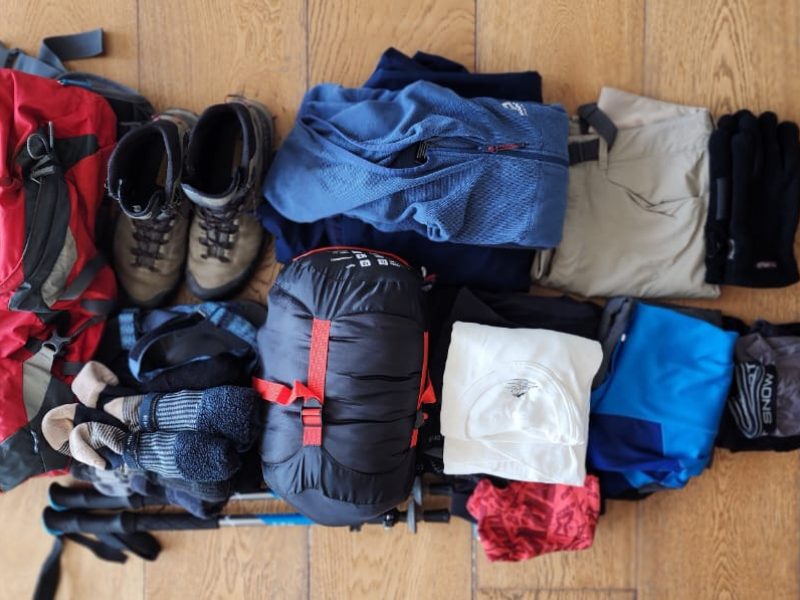
High mountain passes are nature’s dramatic gateways — narrow routes between towering peaks where trekkers can cross from one valley to another. In Nepal’s Himalayas, these passes sit at breathtaking altitudes, often above 5,000 meters, and they attract adventure lovers from all over the world. Why? Because crossing a Himalayan pass isn’t just walking; it’s testing your limits, feeling the raw power of nature, and witnessing views so vast they hardly seem real.
Each pass offers something special — steep ascents, rugged trails, glaciers under your feet, and panoramas of the highest mountains on Earth. Along the way, you meet friendly locals, walk through ancient villages, and experience unique mountain cultures that have existed for centuries. Yes, the climbs are challenging, the weather can be unpredictable, and the air is thin, but the sense of achievement when you stand at the top of a pass is like nothing else.
Nature Heaven Treks and Expedition will guide you through five of the most epic Himalayan passes for serious adventure seekers. These are journeys for trekkers who want more than just a walk — they want the thrill, the beauty, and the life-changing experience that comes with conquering the roof of the world.
A Himalayan pass becomes truly “epic” when it combines several special factors that go beyond a normal trekking trail:
1. 5 Epic Himalayan Pass Altitude
Most epic passes are at very high elevations — often above 5,000 meters. The thin air makes every step more challenging and requires your body to adapt to lower oxygen levels. Standing at such heights gives you unbeatable views of surrounding snow peaks and glaciers.
2. 5 Epic Himalayan Pass Difficulty
These passes are not simple walks. You may need to cross steep slopes, rocky terrain, or even ice and snow. Trekkers often face long climbing days, unpredictable weather, and the physical challenge of carrying gear at high altitude.
3. 5 Epic Himalayan Pass Remoteness
Epic passes are usually far from towns or roads. You may trek for several days before reaching them, passing through untouched valleys and isolated landscapes. This remoteness means fewer crowds and a stronger sense of adventure.
4. 5 Epic Himalayan Pass Natural Beauty
From panoramic Himalayan peaks to turquoise lakes, glaciers, and colorful prayer flags, the scenery around these passes is unforgettable. Every turn feels like stepping into a postcard.
5. 5 Epic Himalayan Pass Cultural Significance
Many Himalayan passes have deep cultural or spiritual meaning. Some are ancient trade routes, while others connect remote mountain communities. Passing through them can offer encounters with local traditions, monasteries, and festivals.
How They Differ from Standard Trekking Trails
Unlike regular treks, epic passes often require multiple days of approach, proper acclimatization, and more advanced preparation. The trails may be unmarked, weather can change quickly, and the physical challenge is much greater.
Seasonal Accessibility & Experience Needed
Most high passes are only accessible during the best weather windows — usually spring (April–May) and autumn (September–November) — when snow levels are lower and skies are clearer. Trekkers should have prior high-altitude trekking experience, good fitness, and sometimes even basic mountaineering skills.
Nature Heaven Treks and Expedition, we guide trekkers across these legendary passes with safety, comfort, and expert support — making sure every “epic” moment is yours to enjoy.

Overview
Thorong La Pass is one of the highest trekking passes in the world, standing at 5,416 meters (17,769 ft) above sea level. It is located on the Annapurna Circuit, connecting the Manang Valley on the east with the Mustang region on the west. Most trekkers cross the pass after 10–12 days of trekking, starting from Besisahar or Dharapani and gradually gaining altitude to avoid altitude sickness.
Key Highlights
From the top of Thorong La, you get incredible panoramic views of the Annapurna and Dhaulagiri ranges, along with other snow-capped Himalayan peaks. On the Mustang side, you can visit Muktinath Temple, a sacred site for both Hindus and Buddhists. The landscapes change dramatically along the route—from lush forests and terraced fields to alpine meadows, barren high-altitude deserts, and icy glacial zones—making the journey diverse and memorable.
Best Season & Challenges
The best seasons to cross Thorong La Pass are spring (March–May) and autumn (September–November), when the weather is stable, skies are clear, and trails are safe. Crossing in winter can be dangerous due to heavy snow, while the monsoon season brings rain and landslides on lower trails. The main challenges are high altitude (risk of AMS), unpredictable weather, and the long, steep climb on the day of crossing, which requires good physical fitness and proper acclimatization.

Overview – Remote and Less Crowded Adventure
Larkya La Pass is the highest point of the Manaslu Circuit Trek and one of the most stunning high mountain passes in Nepal. It sits at 5,160 meters (16,929 ft) and offers trekkers a peaceful, remote experience far away from busy trails like Everest or Annapurna. The route to the pass takes you through quiet villages, peaceful forests, and dramatic valleys, eventually opening up to icy glaciers and wide mountain views. Because it’s less crowded, you get a true sense of adventure and connection with nature.
Highlights – A View Worth the Effort
From the top of Larkya La, you can see a jaw-dropping panorama of Mount Manaslu (8,163 m), Himlung Himal, Annapurna II, Cheo Himal, and other snowy peaks. The trail leading to the pass crosses glacial valleys and high-altitude landscapes that look like a painting. The sense of achievement after reaching the pass is unforgettable — it’s a moment every trekker will remember for life.
Logistics & Acclimatization Tips
Crossing Larkya La is challenging because of the altitude and long trekking day. To prepare, spend at least two acclimatization days before climbing higher — one in Sama Gaon and another in Samdo. Drink plenty of water, walk slowly, and follow the “climb high, sleep low” rule to avoid altitude sickness. The crossing day usually starts early in the morning to take advantage of good weather and firm snow. Hiring an experienced local guide through Nature Heaven Treks and Expedition ensures you have safe pacing, proper gear advice, and the best acclimatization plan.

Overview
Cho La Pass is one of the most thrilling and challenging high-altitude passes in the Everest region. It connects the classic Everest Base Camp route with the stunning Gokyo Valley, making it an essential part of the Everest Three Passes Trek. The pass sits at 5,420 meters (17,782 ft) above sea level and offers jaw-dropping views of the Himalayas. Trekkers often cross it after visiting Everest Base Camp, heading towards Gokyo Lakes.
Highlights
One of the most memorable moments is crossing the Ngozumpa Glacier, the largest glacier in Nepal. You’ll also get to see the breathtaking turquoise Gokyo Lakes, famous for their crystal-clear waters reflecting snow-capped peaks. From the top of Cho La, you’ll enjoy wide, panoramic views of mountains like Ama Dablam, Cholatse, and Everest in the distance. The route is a mix of rocky trails, snowy slopes, and glacial sections—so every step feels like an adventure.
Technical Aspects & Weather Considerations
Cho La Pass is not just a casual hiking trail—it has some technical challenges. The approach involves steep ascents and descents, loose rocks, and sometimes icy or snowy surfaces. Trekking poles, microspikes, or crampons are often helpful, especially in spring and late autumn when ice can make the path slippery. Weather can change quickly at this altitude. Clear mornings can turn into snowy afternoons, so an early start is essential. The best seasons for crossing are March–May and October–November, when the skies are usually clearer and snow levels are manageable.

Renjo La Pass is a high and peaceful mountain pass in the Everest region, offering one of the quietest routes to the Gokyo Valley. At 5,360 meters, it rewards trekkers with a breathtaking view of four of the world’s tallest mountains — Everest, Lhotse, Makalu, and Cho Oyu — all in one frame. Unlike the busier trails of Everest Base Camp, this route feels calm and remote, making it perfect for trekkers who want fewer crowds and more time to enjoy nature. The trail also passes through traditional Sherpa villages and beautiful turquoise lakes, making it an amazing choice for photography lovers.
If you trek with Nature Heaven Treks and Expedition, you’ll not only enjoy expert guidance but also get the chance to travel at your own pace, with a team that focuses on safety, comfort, and unforgettable mountain experiences. This route is ideal if you dream of capturing quiet sunrise moments, untouched landscapes, and sweeping Himalayan panoramas. Whether you are an experienced trekker or a passionate photographer, Renjo La Pass will give you that rare mix of adventure and peace you’re looking for.
Overview
Kang La Pass is one of the hidden treasures of the Annapurna region. Located at 5,320 meters, it connects the remote Nar Phu Valley with Manang. This trek is perfect for those who want an off-the-beaten-path adventure. The trail takes you through ancient Tibetan-influenced villages, where the people, culture, and traditions have remained unchanged for centuries. You’ll also enjoy stunning views of the Annapurna massif, with dramatic rock formations, glaciers, and snow-covered peaks along the way.
Highlights
Accessibility & Permits
The Kang La Pass trek starts with a jeep or bus ride from Kathmandu to Koto, followed by a hike into Nar Phu Valley. Because this region is restricted, you need a Nar Phu Valley Restricted Area Permit and an Annapurna Conservation Area Permit (ACAP). Independent trekking is not allowed—by law, you must trek with a registered guide and through a government-authorized company like Nature Heaven Treks and Expedition. The best seasons are spring (March–May) and autumn (September–November) when the weather is clear and the views are spectacular.
When picking a Himalayan pass trek, think about your trekking experience, physical fitness, and how much time you have.

High passes are often cold, windy, and unpredictable. You’ll need:
The Himalayan passes are not just trails; they are life-changing journeys. When you prepare well, respect local cultures, and trek with an open heart, you will experience something truly magical. Every step you take will bring you closer to breathtaking views, new friendships, and a deep sense of pride. Crossing these high passes is not just about reaching the destination—it’s about the adventure, the memories, and the stories you’ll carry for a lifetime.
Now is the perfect time to start planning your own Himalayan adventure. Whether it’s your first trek or your tenth, Nature Heaven Treks and Expedition is here to guide you every step of the way. From expert planning and permits to friendly guides and safe journeys, we make sure you can focus on enjoying the mountains. Book your trek today and turn your dream of conquering the Himalayas into reality.
“5 Epic Himalayan Pass Crossings with Nature Heaven Treks & Expedition – The Ultimate Trekker’s Challenge”




@Copyright 2025 Nature Heaven Treks and Expedition, Kathmandu, Nepal. All Rights Reserved.
Chat with Us